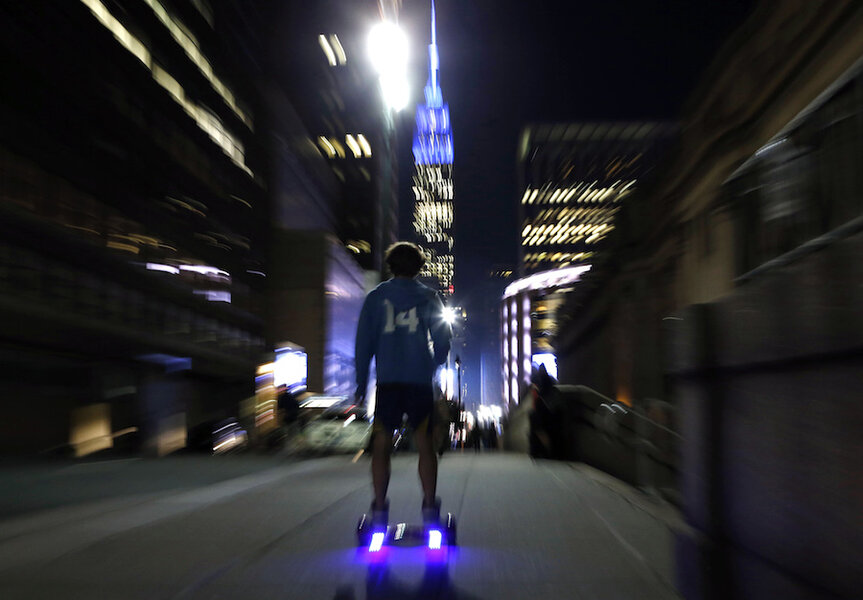Your 'hoverboard' may not be safe, say federal regulators
Loading...
Trendy so-called "hoverboards" rolling down streets around the country may not be safe, according to US government regulators.
The devices, which don't hover but roll on two wheels, have a tendency to catch fire, according to the US Consumer Product Safety Commission (CPSC). The regulatory body cracked down on the self-balancing scooter industry Thursday with a letter to makers and sellers that said the devices would need to be certified safe before they are sold.
Hoverboards have previously been sold in the US without any real certification, but a thirty-party company has recently come up with a safety certification. The CPSC is requiring that hoverboard makers and sellers comply with those safety regulations.
"This is us drawing a line in the sand and a notice for the entire hoverboard community," Elliot F. Kaye, the chairman of the CPSC, told Mashable.
But how much power does the CPSC have over a relatively new industry? A lot.
"From our perspective, a smart retailer will put in place a stop sale to find out if their inventory complies with our standard. If they are certain that it doesn’t, they should then issue a recall proposal," Mr. Kaye added in his interview with Mashable.
The new safety certifications will be given by Underwriters Laboratory, a private company that certifies many products. Underwriters Laboratory started the certification process for some vendors in early February.
The CPSC letters sent out Thursday do not signal a recall and the safety certification is voluntary. However, as Mashable writes, “it will almost certainly prompt recalls from major retailers and manufacturers.”
The decision from the CPSC came after months of investigation into the hoverboards. The regulatory body tested many of the devices and found defects that could cause melting. In the UK, the National Trading Standards reported that 88 percent of the hoverboards tested by the government were found to be dangerous.
There have been several reports of injuries and fires as a result of the devices. In January 2016, The Christian Science Monitor reported on a California house fire that was started by a hoverboard. The CPSC reported it received reports of 52 hoverboard fires, which caused more than $2 million in property damage, between Dec. 1, 2015 and Feb. 17, 2016.
The hoverboard craze is a recent phenomenon. The boards, more akin to Segways without handles than the hoverboards popularized by Back to the Future, entered pop culture as YouTube celebrities, like Casey Neistat, started using them in mid-2015 and spiked after hip hop artist Wiz Khalifa was restrained for riding one in an airport.
The exact number of hoverboards sold is unknown, but many of them come from the tech manufacturing hub of Shenzhen, China. The number is likely in the millions. Quartz reported more than 400,000 shipped from Shenzhen in October alone.
“Self-balancing scooters that do not meet these voluntary safety standards pose an unreasonable risk of fire to consumers. Consumers risk serious injury or death if their self-balancing scooters ignite and burn,” the CPSC letter states.








